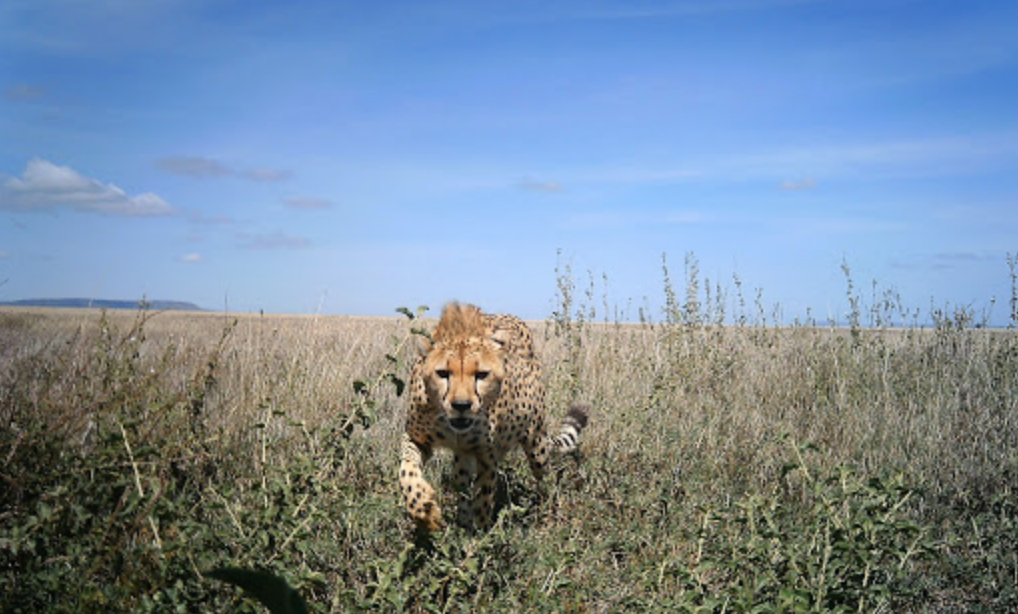
The Mbaza AI image classification algorithm is used for large-scale biodiversity monitoring in Gabon’s Lopé and Waka national parks, where cheetahs like this one roam.
African Algorithm Brings Exciting Tools to Efforts to Protect Wildlife
AI is rebuilding our human existence on this earth. Our daily lives are being molded in new and exciting ways with the use of AI. And AI is having a huge impact on animals around the planet. Counting them, saving them from poachers and so much more.
We found a delightful article at theguardian.com which reveals ways AI is helping many of the species of our planet that are often the least able to protect themselves against the encroaching humans everywhere.
There’s a strand of thinking, from sci-fi films to Stephen Hawking books, that suggests AI could spell doom for humans. But conservationists are increasingly turning to AI as an innovative tech solution to tackle the biodiversity crisis and mitigate climate change.
A recent report by Wildlabs.net found that AI was one of the top three emerging technologies in conservation. From camera trap and satellite images to audio recordings, the report notes:
“AI can learn how to identify which photos out of thousands contain rare species, or pinpoint an animal call out of hours of field recordings – hugely reducing the manual labour required to collect vital conservation data.”
With machine learning (ML) computer systems that use algorithms and models to learn, understand, and adapt, AI is often able to do the job of hundreds of people, getting faster, cheaper, and more effective results.
Here are a few of the AI projects contributing to our understanding of biodiversity and species:
Stopping Poachers
We know poaching of rare animals has long been a lucrative proposition and completely illegal. The countries in Africa that are hardest pressed by poachers, have taken AI and new cameras to intercept these criminals.
The Connected Conservation Initiative, from Game Rangers International (GRI), Zambia’s Department of National Parks and Wildlife, and other partners, is using AI to enhance conventional anti-poaching efforts, creating a 19km-long virtual fence across Lake Itezhi-Tezhi. Forward-looking infrared (FLIR) thermal cameras record every boat crossing in and out of the park, day and night.
“AI can be a gamechanger, as it can monitor for illegal boat crossings and alert ranger teams immediately. The technology has enabled a handful of rangers to provide around-the-clock surveillance of a massive illegal entry point across Lake Itezhi-Tezhi.” said the head ranger.
Counting Species
Keeping track of the earth’s many species and their correct locations or migrations requires a lot of data and that data must be shared with others around the world as soon as possible. In 2020, data science company Appsilon teamed up with the University of Stirling in Scotland and Gabon’s national parks agency (ANPN) to develop the Mbaza AI image classification algorithm for large-scale biodiversity monitoring in Gabon’s Lopé and Waka national parks.
They are bringing the cameras and the AI teams into the second-largest rainforest in the world located deep in the Congo. The Mbaza AI algorithm was used in 2020 to analyze more than 50,000 images collected from 200 camera traps spread across 7,000 sq km of forest. Mbaza AI classifies up to 3,000 images an hour and is up to 96% accurate. Conservationists can monitor and track animals and quickly spot anomalies or warning signs, enabling them to act swiftly when needed. The algorithm also works offline on an ordinary laptop, which is helpful in locations with no or poor internet connectivity.
The other issues that AI and machine learning are being applied to are equally as interesting as the two samples above. And the use of the Mbaza Algorithm is spreading to neighboring countries. In Gabon, the government and national parks agency are aiming to deploy cameras across the entire country.
“Mbaza AI can help all these projects speed up data analysis.”
read more at theguardian.com







Leave A Comment